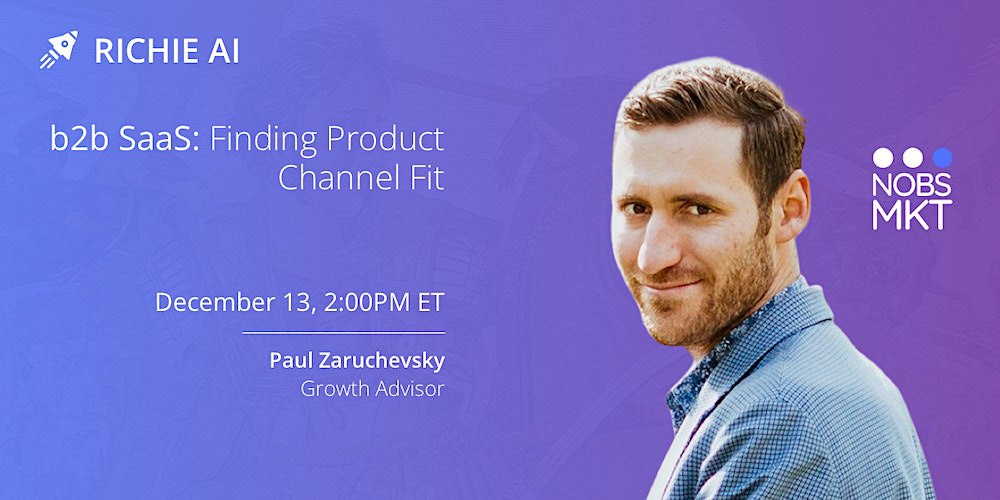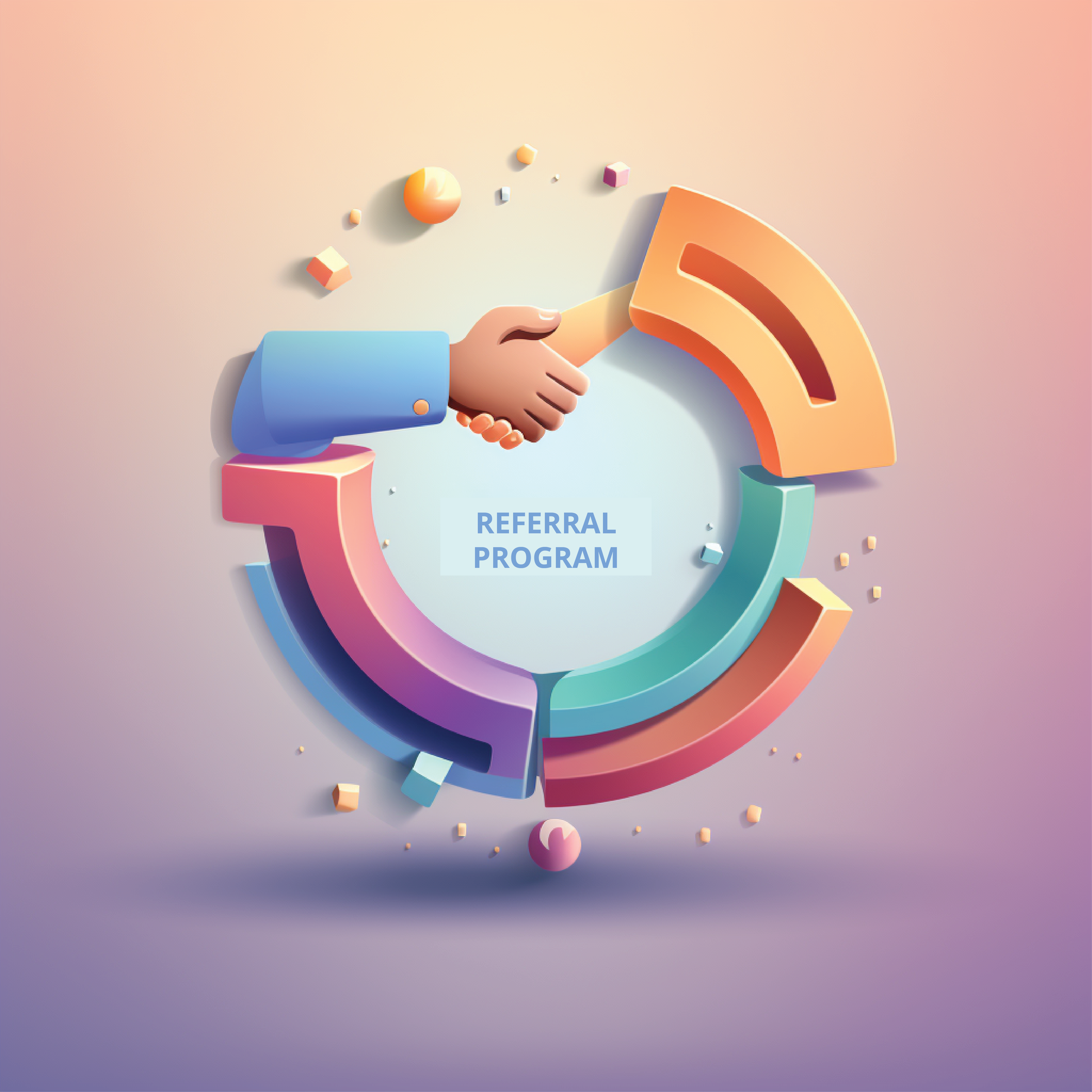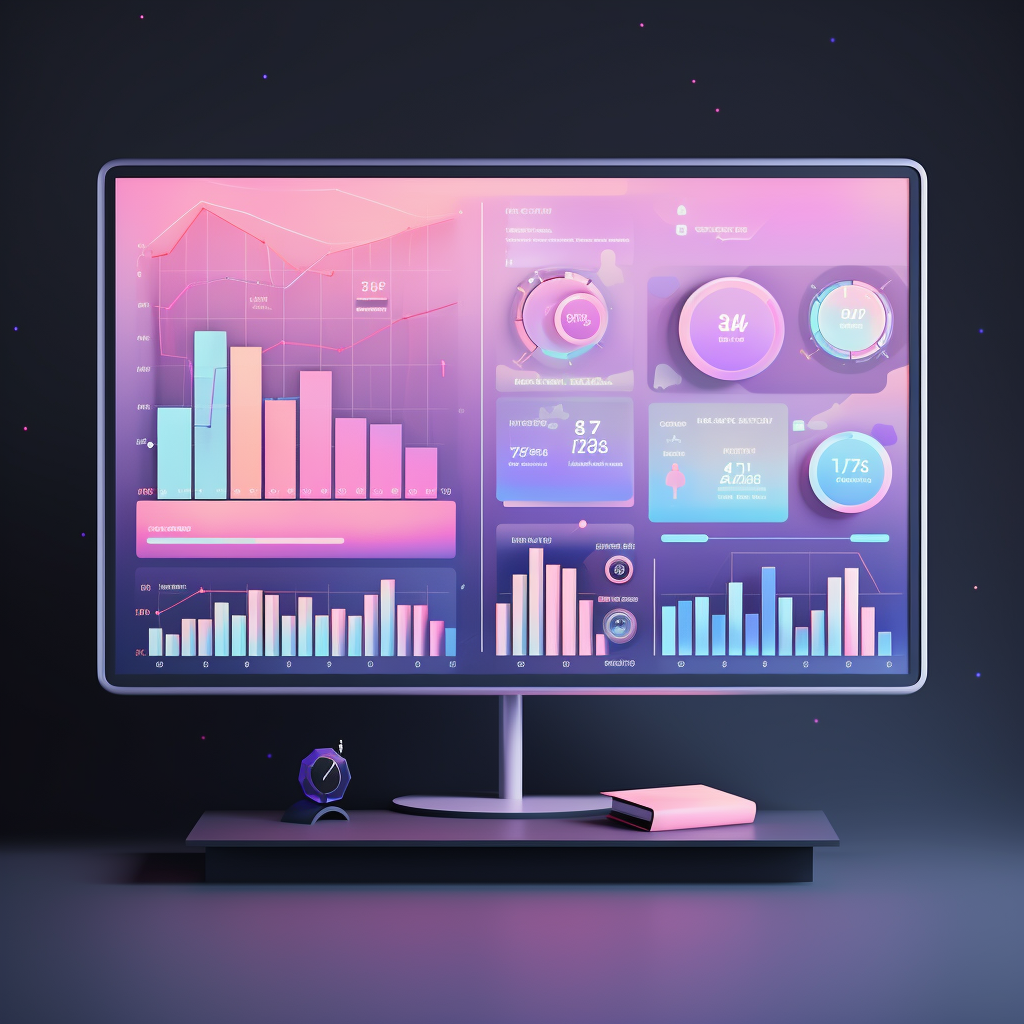
Richie AI's B2B SaaS series of webinars is on 🔊. The recording of the webinar B2B SaaS: Finding Product Channel Fit is now available on YouTube!
Paul Zaruchevsky, Founder/Growth Advisor at NOBSMKT shared his expertise in marketing and digital channels, he helps B2B SaaS companies grow faster.
Follow the link to watch the full version of the engaging webinar and Q&A session - https://youtu.be/bvKJVo9-OB8
Paul talked about the following:
- What PCF means
- Primary use cases for each channel
- The PCF framework
- Treating the discovery of a PCF as an always-on process
- How to prioritize: Priority Score
- An evergreen process: building experimental approach
- Metrics to keep an eye on – early signals of success
If you would like to share the webinar insights with your colleagues, feel free to share the recording: https://youtu.be/bvKJVo9-OB8
See you at the next event! Stay tuned for the news, and follow our LinkedIn page for updates.
B2B SaaS: Finding Product Channel Fit
A great B2B SaaS product only succeeds when it's delivered through the proper distribution channels. The concept of product channel fit is all about assessing whether a business uses the best distribution channel for their product. You'll find the right distribution channel for your product by using a product channel fit framework to analyze your distribution channels and identify areas of improvement.
What is a Product Channel fit?
The term 'product channel fit' refers to the alignment between a product or service and its distribution channels. It's about ensuring that a product is sold through the right channels. The product channel fit stage is when your product grows exponentially because of a specific channel(s).
For example, your product could be intended for young, tech-savvy individuals. The best distribution channel would be online stores like Amazon. Conversely, if you're selling a product to an older traditional consumer base, you'll want to sell through physical retail stores.
It's important to pair your product with the best distribution channel to maximize sales and ensure efficient delivery to your target audience.
Use Cases for Channels in B2B Saas
These are 9 of the most commonly used distribution channels in B2B SaaS:
1. SEO
The SEO channel lets businesses optimize user experience for in-market users to your website when they search for a specific product. For out-of-market users, the SEO channel helps land users who aren't looking for a specific product on your website. Doing so leaves a mental footprint of your brand in their minds.
2. Google Ads
The Google ads channel for in-market users involves bidding on high-intent keywords to show ads to potential customers. For out-market users, you'll bid on low-intent keywords to leave an impression on users who might become customers in the future.
3. Facebook
Facebook is best used for target-response targeting in-market users. For out-of-market users, it's best used to increase brand awareness and as part of a public relations campaign.
4. Instagram
As a distribution channel, Instagram is best used for target response targeting in-market users. And for out-of-market users, it's best used to increase brand awareness and as part of a public relations campaign.
5. LinkedIn
LinkedIn is most commonly used as a distribution channel for ABM retargeting for in-market users. For out-of-market users, it's best used to spread thought leadership and business founder content to increase brand visibility.
6. YouTube
YouTube is most effectively used for brand and product response for in-market users. For out-of-market users, YouTube is used to increase brand awareness.
7. Email
For in-market users, email is used as an onboarding tool. For out-of-market users, email is effective as a lead nurturing vehicle.
8. Review Sites
Review sites are only used to boost a positive brand image and increase brand trustworthiness for in-market users.
9. Podcasts
Podcasts are only used for out-of-market thought leadership demonstrations.
Product Channel Fit Framework
A product-channel fit framework is an analytical set of guidelines that help B2B SaaS companies align their products with the right distribution channel for them. The framework includes a set of criteria companies can use to evaluate different distribution channels.
Layered Model
The product channel fit framework is a layered model with the following lawyers from top to bottom.
Channels: Which channels does the company use?
User categories: What type of in-market and out-of-market users does the company target
Data points: Which qualitative and quantitative data is collected and analyzed from existing channels?
Opportunities: Which type of opportunities does your data-driven approach identify?
Hypothesis: Which hypothesis for improving your PCF can you develop from your identified opportunities and data-driven approach?
Experiments: Which experiments can you perform to verify your hypothesis?
Learning: Which information can you extract about improving your PCF from your experiments?
PCF Framework Example: Hubspot
Let's take Hubspot as an example of a product channel fit framework.
● Channel: Hubspot uses the SEO channel for growth.
● User categories: They use content marketing for out-of-market users.
● Data point: They used some 300,000 quantitative data points consisting of content-related search terms.
● Opportunity: Hubspot identified they could use organic content to capture content market operators.
● Hypothesis: They established the hypothesis that creating blog posts around content marketing will attract content marketing operators.
● Experiments: Hubspot performed two experiments
● They created ten blog posts and captured the email addresses of page visitors for future lead nurturing.
● They created ten blog posts and retargeted visitors with LinkedIn ads.
● Learning: Hubspot learned they could capture 5% of traffic through blog posts, but only 1% are in ICP. They also learned that the CPA of LinkedIn ads is 35% lower than cold reach from other channels.
Prioritization
Effective B2B SaaS marketing requires you to form a targeted approach that doesn't waste resources on channels that don't provide high returns. Every B2B SaaS organization has its own prioritization score, but the following is a good general approximation:

With this score system, most frameworks score between 1 and 5 and can go up to 10. A higher score indicates a better framework.
● Targeting
A targeting channel is valued by the number of people it can reach. For example, Facebook has a high targeting score since it can target millions of people. Conversely, door-to-door marketing has a low targeting score because it reaches few people.
● Control
Control refers to how easily your organization can alter how the channel is used. For example, Google Ads has a low control score, but emails have a high control score.
● Scale
Scale refers to how fast you can increase your marketing efforts on the channel. For example, review sites score lowest for scale since they're limited to the people searching for your product or company. Youtube has a high scale score since Youtube videos can easily reach a larger audience.
● Time to Value
The time-to-value score refers to how long it takes to receive results from your efforts. Instagram has a high time-to-value score since it provides fast results over a few days. Meanwhile, SEO has a low time-to-value scale since it takes around six months to receive results.
● Cost
Cost refers to the capital needed to open a distribution channel. For example, TV ads are an example of a high-cost channel, and Reddit marketing is a low-cost one.
● Effort
Effort refers to the amount of time needed for each channel. LinkedIn marketing is an example of a low-effort channel, while email marketing is a high-cost one.
Putting it in Action
Going back to the Hubspot example, they've picked an SEO channel. Using our generalized formula, SEO has the following scores:
● Targeting: 4
● Control: 2
● Scale: 3
● Time to value: 2
● Cost: 3
● Effort: 3
Plugging these numbers in gives a priority score of 1.8. One flaw of this system is that in-market users always outscore out-of-market users.
Metrics to keep an eye on
You'll use different metrics to track progress for different channels and different user categories.
Here are a few examples
SEO and Google Ads for in-market users
● Page visits from organic keywords
● Conversions from keywords
SEO and Google Ads for out-of-market users
● Page visits from content
● Lead to Customer CR
Facebook, LinkedIn, and Instagram for in-market users
● Cost per sign up
● Sign up for Customer CR
Facebook, LinkedIn, and Instagram for out-of-market users
● Reach and Ad Recall
● Branch search volumes
In conclusion, every B2B SaaS company needs to find the right distribution channel for their product. The right product channel ensures your business maximizes sales and delivers your product in the most effective way possible. You can determine the best distribution channel through a product channel fit framework.
#b2bsaas #webinar #productchannelfit #growth #marketing #digitalmarketing #channels #btob #businesstobusiness














































.png)





















































































































.png)


















.png)




